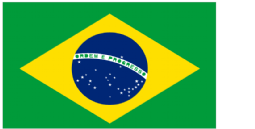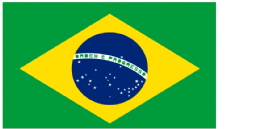This edition features updates from: The United Kingdom, the Unified Patent Court (UPC) and Brazil.
The Irides Weekly Update is our round-up of patent litigation news highlights from around the world. Taking its name from the plural of “iris” - a nod to the ability of Irides to see what’s happening around the world.

UK
Court of Appeal confirms validity of Moderna’s mRNA vaccine patent.
As previously reported here, at first instance Mr Justice Meade handed down his 153 page decision ruling that (i) Moderna’s EP 3 590 949 (EP 949) was valid and infringed and (ii) its EP 3 718 565 (EP 565) was invalid for added matter and obviousness over an earlier Moderna patent application WO 2015/164674. On 1 August, Arnold LJ, with whom the other Lord Justices agreed, upheld the judgment of Meade J and dismissed all of Pfizer/BioNTech’s (PBNT) grounds of appeal (Decision here).
PBNT appealed Meade J’s conclusion that EP 949 is valid. PBNT alleged that EP 949 was anticipated and/or rendered obvious by the disclosure of International Patent Application No. WO 2007/024708 filed by the Trustees of the University of Pennsylvania (UPenn) and published on 1 March 2007.
EP 949 is owned by Moderna and has a priority date of 1 October 2010. The only claim of EP 949 in issue on appeal was claim 3 which is to: “An mRNA wherein 100% of nucleotides comprising uracil in the mRNA are replaced with nucleotides comprising N1-methyl-pseudouridine.” As Arnold LJ noted, this claim has three elements: (i) an mRNA (as opposed to, in particular, another type of RNA); (ii) wherein 100% of nucleotides comprising uracil are replaced with; (iii) N1-methyl-pseudouridine (m1Ψ). The EP 949 patent therefore covers modifications made to the mRNA used in COVID-19 vaccines.
Anticipation
PBNT’s novelty attack centred around UPenn’s disclosure, in separate lists, of each of m1Ψ and 100% replacement, as a clear and unambiguous disclosure of 100% replacement of uracil with m1Ψ in mRNA. PBNT further argued that there was a strong pointer to combining 100% replacement with m1Ψ because the clear teaching of UPenn as a whole is that 100% replacement is preferred because it confers improvements in both efficiency of translation and reduction in immunogenicity.
Arnold LJ agreed with Meade J that claim 3 of EP 949 was not anticipated by UPenn’s disclosure. In doing so, he provided the following, interesting comments on the law of anticipation, particularly in relation to circumstances where an item selected from a list or class of items is novel:
- There is no legal distinction between a list of potential alternatives and a class (such as a Markush formula). The question is whether there is an individualised description of the item in question. This is a question of fact and degree depending on the precise content of the prior art.
- The UK approach to selection from multiple lists mirrors that of the Bayer/Diastereomers EPO decision (T 12/81). Namely an end product resulting from the reaction of a specific pair of starting substances may be seen as a novel selection for patent purposes if its preparation requires using entities from two classes of starting substances given in two lists of some length.
Anticipation is a binary question. A claim is either anticipated or it is not. Unlike the law of obviousness, which requires an exercise in evaluation on the part of the Court, anticipation only requires the application of the correct legal standard to the prior art.
Obviousness
On appeal, Arnold LJ reminded himself that when assessing obviousness it is not the role of the appellate court to re-evaluate the lower court’s assessment, but that it should only interfere where the lower court has erred in law or in principle.
PBNT relied on four alleged errors. First, they contended that the judge had erred in his identification of the skilled person to whom EP 949 was addressed, and therefore wrongly side-lined evidence from their expert, Dr Enright. Secondly, PBNT contended that the judge had erroneously interpreted part of the teaching of UPenn. Thirdly, PBNT contended that the judge wrongly found that Dr Enright’s evidence was tainted with hindsight. Fourthly, PBNT contended that the judge erred in his assessment of the skilled person’s motivation and expectation of success.
Arnold LJ promptly dismissed the second to fourth grounds, holding that the trial judge had made no error of principle.
He also dismissed the first ground and, in doing so, described the three main roles of expert witnesses in patent cases. First, to educate the court as to the relevant technology and put it in possession of the skilled person’s common general knowledge. Secondly, in many cases, to give evidence concerning one or more of the substantive issues in the case, and in particular obviousness. Thirdly, in some cases, to interpret the results of experiments, which may be experiments performed for the purposes of the litigation.
As regards the second role of expert witnesses, Arnold LJ discussed a key consideration of whether the expert witness is properly qualified to opine on the question of obviousness. Arnold LJ considered various authorities and noted that in order to be properly qualified, an expert witness must be in a position to speak to the common general knowledge of the skilled person at the relevant date. An expert witness who cannot do this, cannot be said to be properly qualified, no matter how good a witness the person in question is. Therefore, it follows that it may be relevant in some cases to determine which of two expert witnesses more closely reflects the skills and experience of the skilled person. For these reasons, Arnold LJ noted that it was commonplace for judges hearing patent cases to assess the extent to which the parties’ expert witnesses embody the attributes of the skilled person. Thus, the trial judge had been entitled to give more weight to Moderna’s expert on the issue of obviousness than Dr Enright on the basis that the former’s experience more closely aligned with that of the skilled person.
Having rejected all four of the alleged errors advanced by PBNT, its appeal on obviousness was also dismissed.

UK
Dapagliflozin validity proceedings reach conclusion.
On 31 July 2025, the Supreme Court refused AstraZeneca’s request for permission to appeal the Court of Appeal decision in the dapagliflozin proceedings which invalidated EP 1 506 211 (and its associated SPCs) for both lack of plausibility and lack of technical contribution.

UPC
Paris Local Division rejects claim for infringement by equivalence
[UPC_CFI_363/2024]
On 1 August 2025, the Court of Appeal gave its decision in proceedings brought by NJ Diffusion against Gisela Mayer for alleged infringement of its patent relating to the construction of wigs. The patent in suit claimed a wig which has a cap made up of pieces of lightweight, fine-mesh fabric including a transparent fabric called a “monofilament”. One integer of the claim required that the “adjacent edges of the monofilament piece and parts of the cap contiguous with said monofilament pieces are placed edge to edge” (emphasis added). The claim also required a translucent assembly strip which “covers and overlaps said edges”.
Considering literal infringement, the Court found that in the Defendant’s wigs the two fabric types are “superimposed”, rather than placed “edge to edge”, under the assembly strip and that this fell outside the scope of the claim. In coming to this decision, the Court noted that the description contained two distinct embodiments, one where the fabrics are connected “edge to edge” and the other where the fabrics are “superimposed”, yet the scope of protection defined by the claims was expressly limited to “edge to edge”. The Court also observed that the claim feature of placing the pieces edge to edge was introduced during prosecution at the EPO and considered this “enabled the patent to be granted in this version by limiting its scope”. The Court also suggested that this should have led to the deletion of the description of the “superimposed” method in the patent before it was granted.
In the context of the Claimant’s case for infringement by equivalence, given the parties had not agreed to apply any particular national law to determine infringement by equivalence, the Court considered it should apply case law developed within the UPC (but not using the test from UPC cases which had applied national law following an agreement of the parties, such as Plant-e v Arkyne which applied the test under Dutch law). The Court considered it was necessary to start by answering a question which was the “lowest common denominator” in view of the differing tests within the UPC contracting member states, in particular, whether “the modified (or substitute) means essentially fulfil the same function to achieve essentially the same effect?”. Applying this to the facts of the case, the Court considered that the function of the assembly strip taught in the patent in suit was to assemble the two fabrics, whereas in the alleged infringing products the two fabrics are assembled by the two seams and so the “essential function” of the assembly strip is to cover the seams for greater user comfort. As such the infringing products did not have the same function as the claim and the case for infringement by equivalence was also rejected.

UPC
Court of Appeal provides further guidance on confidentiality of documents
[UPC_CoA_70/2025]
On 1 August 2025, the Court of Appeal (CoA) handed down its decision relating to applications filed by Strabag and Chainzone to designate certain technical information as confidential in relation to the ongoing infringement proceedings against Swarco. The CoA ruled that confidentiality restrictions could not be imposed on material previously submitted at first instance, and only upheld the confidentiality of certain material submitted for the first time on appeal.
The applications related in part to a measurement report, stated to be internal know-how of the intervener, Chainzone, which was not publicly known and kept confidential. However, this report had been submitted at first instance in order to refute the infringement allegation, with no accompanying confidentiality application, and was therefore accessible to the opposing party without restrictions. Further, part of the information contained in the report had already become publicly available by being included in the decision of the Vienna Local Division at first instance. The CoA emphasised that an application under r. 262A RoP must be made at the same time as lodging the information and therefore rejected the application so far as it related to such information already submitted. The CoA clarified the type of information that can be classified as a trade secret under Art. 58 UPCA. Trade secrets include information that (i) is not generally known or readily accessible (i.e. can only be determined through time consuming analysis), (ii) has commercial value because it is secret, and (iii) has been subject to reasonable steps to maintain its confidentiality.
The decision also explained the correct procedure for applying for confidentiality restrictions. Requests under r. 262.2 RoP relate to public access to the information only and do not extend to confidentiality obligations on the opposing party and its representatives. Only under r. 262A RoP can an application be made to restrict the use of confidential information, e.g. by limiting distribution to a group of authorised persons.

BRAZIL
BRPTO launches public consultation on proposed changes to the Guidelines on new uses of known products in patent examination.
On 29 July 2025, the Brazilian Patent and Trademark Office (BRPTO) published a Call for Contributions on the new Chapter 9 of the Examination Guidelines for Patent Applications in the Field of Chemistry, which addresses the examination of patent applications related to new uses of known products.
Overall, the proposal provides for additional restrictions for new use claims. Detailed below are some of the notable takeaways:
- Novelty - the proposed Guidelines confirm the BRPTO’s position that therapeutic features such as dosage regimen, route of administration or new patient sub-groups do not confer novelty to the claimed use of the product.
- Post-filed data to prove effect(s) of the claimed use will no longer be accepted - Under the current Guidelines, it is permissible for a patentee to submit additional data provided the data supports information already disclosed in the application as filed. However, under the new proposal, patentees will no longer be able to rely on post-filed data to overcome lack of enablement, and any such submission would be interpreted as added matter.
- Sufficiency of evidence provided (supremacy of in vivo studies) - Further to the previous point, the proposed Guidelines also state that for claims for new medical uses, only data characterising the in vivo use will constitute unequivocal and sufficient evidence supporting the claimed new use. If the patent application only presents ex vivo, in vitro and/or in silico tests, the claimed use will not be considered sufficiently described. Additionally, where the patent application presents studies conducted on animals, the experimental models adopted must be those validated for testing the disease in question.
Comments on the proposed text must be submitted by no later than 27 September 2025.

BRAZIL
Representative of Congress asks President to suspend patents on strategic drugs.
On 30 July 2025, Deputy Salabert filed a formal request that the President of the Republic suspend patents on strategic drugs for the treatment of HIV/AIDs and other serious diseases, as a retaliatory measure against the imposition of abusive tariffs (50% on Brazilian products) by the United States of America.
Under The Economic Reciprocity Law (Law No. 15,122/2025), enacted in April this year, the President can authorise the suspension of IPRs, including patents, in cases of unilateral measures that undermine national sovereignty. This includes, for example, circumstances such as a responding to commercial or financial threats that interfere with the legitimate decisions of the Brazilian State.
Thanks goes to Rob Rodrigues of RNA Law for input on the Brazilian content this week.

/Passle/5f3d6e345354880e28b1fb63/MediaLibrary/Images/2025-09-29-13-48-10-128-68da8e1af6347a2c4b96de4e.png)
/Passle/5f3d6e345354880e28b1fb63/SearchServiceImages/2025-12-23-10-01-04-004-694a6860001b94fa0352717d.jpg)
/Passle/5f3d6e345354880e28b1fb63/MediaLibrary/Images/2024-08-23-11-31-07-354-66c872fb971eecc249d83d40.png)
/Passle/5f3d6e345354880e28b1fb63/MediaLibrary/Images/2025-07-10-13-52-35-189-686fc5a39f23a993118ba1a0.png)